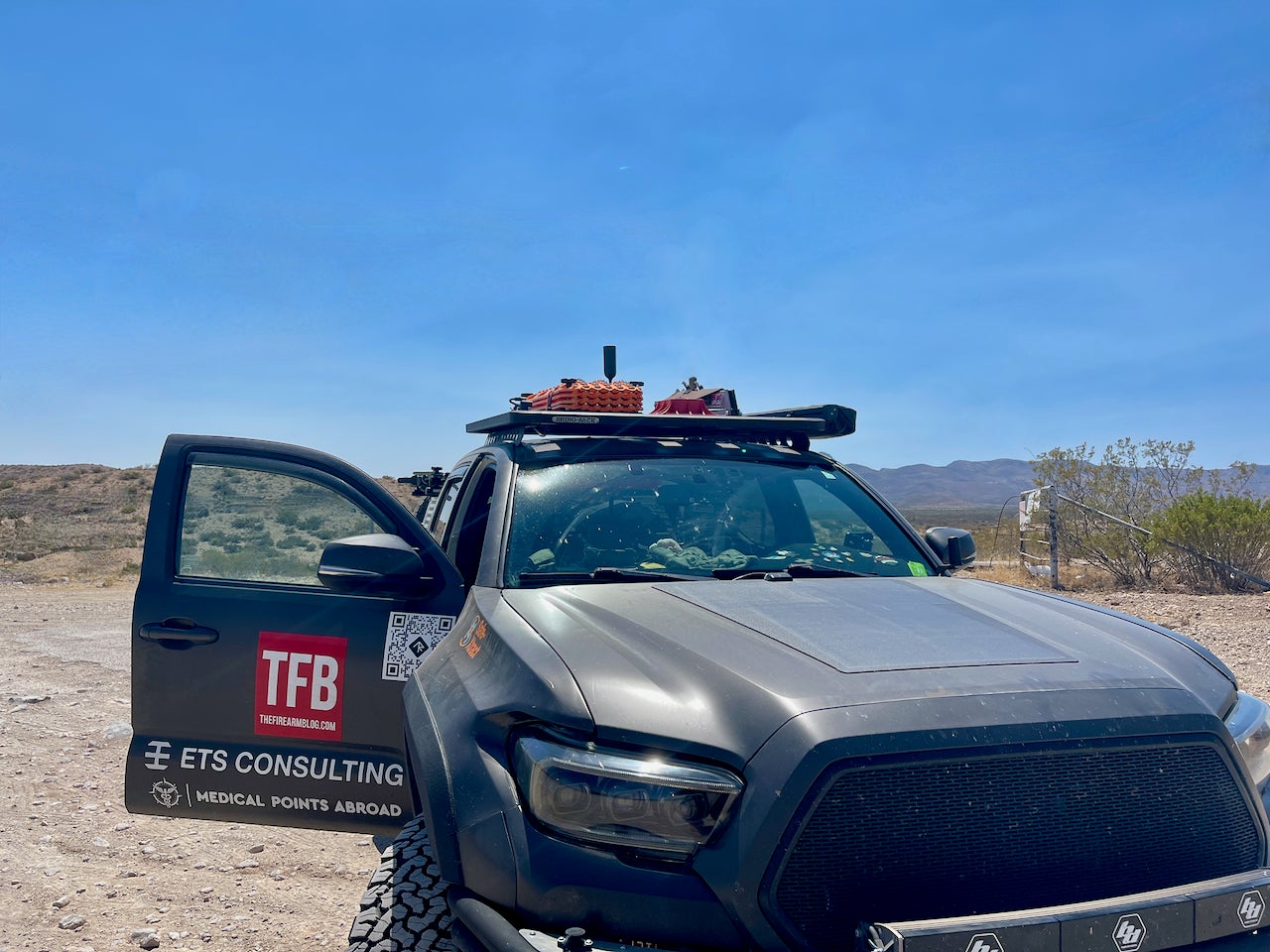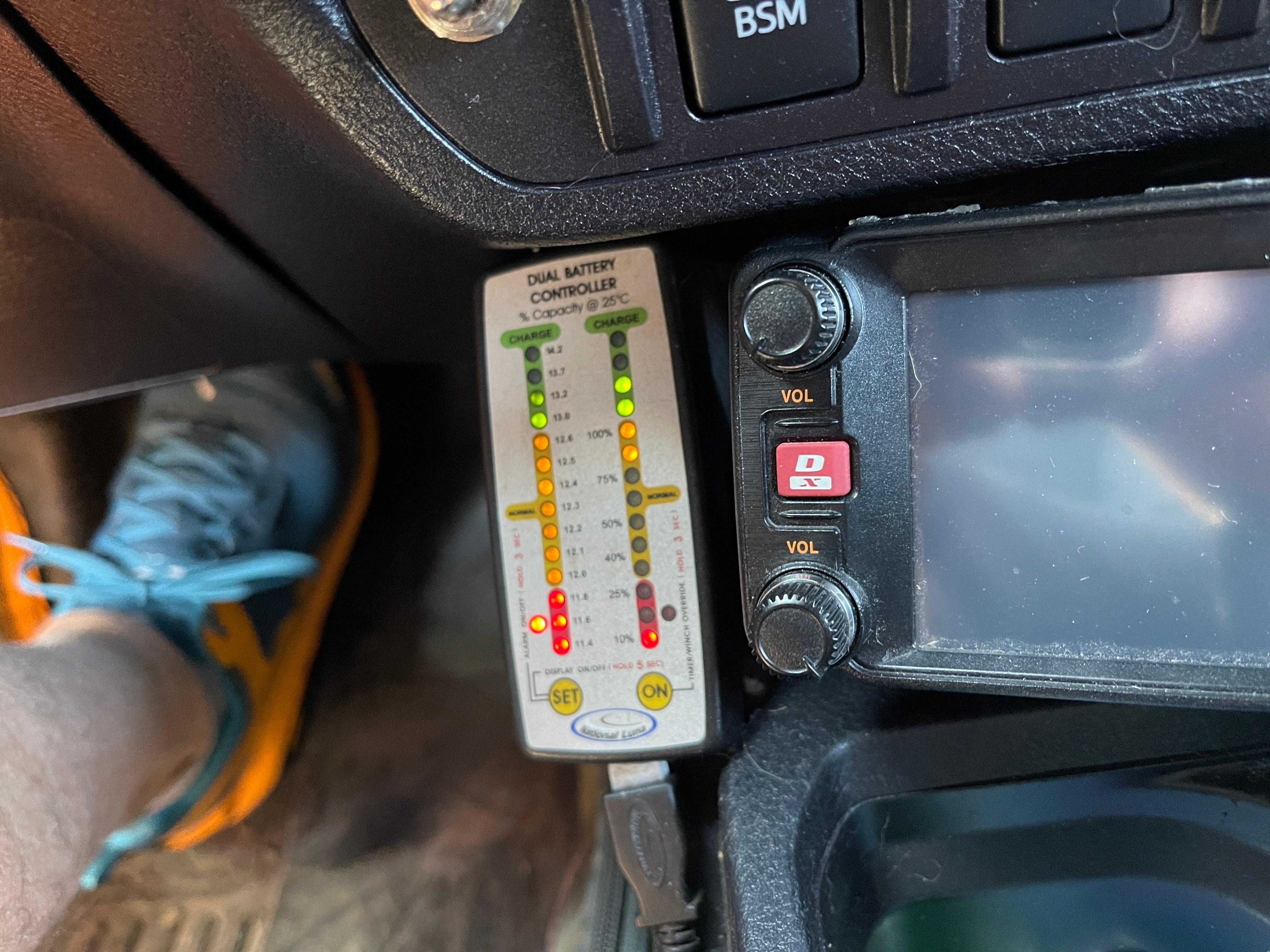The Lensun Solar Panel: A Perfect Addition to any Overlanding Setup
Doc Rader 05.26.22

If you’re an “overlander”, then you know the importance of being self-sufficient. And what could be more self-sufficient than using the power of the sun to charge your batteries? That’s where the Lensun solar panel comes in. It’s a powerful solar panel that can be easily attached to the hood of your vehicle, allowing you to charge your batteries while on the go.
Once I discovered the magic of a 12V fridge, I realized I could never go back to the pedestrian method of ice and a cooler. Going to a fridge does require some configuration changes and is not without cost.
If I want to leave the fridge running all the time (which is less wear and tear on the compressor), I need to have plenty of power to run it. This means good power storage in the form of a battery–preferably not your starter battery.
I am fortunate to live in the southwestern United States where we have 320+ days of sun exposure per year, so solar is a great option.
Why Add A Solar Panel?
A solar panel is just one part of a complete power management system to help you remain self-sufficient.
One misuse of solar panel tech is to directly power accessories. Solar is generally inconsistent in the way it generates power, and you can get fluctuations in voltage. You get peak power when the sun is unimpeded and perpendicular to the solar panel. If you have a portable panel you can move it around during the day, but a fixed panel mounted on the vehicle will not get peak all the time.

You really want to take the power from the solar panel and store it, and then run accessories from the storage. In my truck, I run a couple of accessory batteries (in addition to my starter) which allows me to run a few accessories (like a Snomaster fridge) for up to three days without any charge.
Whether you use it for a vehicle battery charge, or to keep a power station (like a Goal Zero Yeti) topped off, adding a solar panel is a pretty useful addition.
Lensun Solar Panel
Without the need to start your vehicle, this device will keep your battery or auxiliary battery topped up at all times. Your car’s battery recharges when it is parked in the sun which allows you to run your refrigerator, and keep all your electronic equipment recharged.
Hood glare is also significantly reduced. The Lensun hood solar panel’s surface is an ETFE film, which does not reflect light. Because of these light-absorbing qualities, there is less glare while driving.
This is an excellent option for people who want to save space and money. The hood solar panel simply sticks to the car’s hood, so there’s no need for a roof rack or mounting hardware. The entire plug-and-play system may be set up quickly and painlessly. Unlike a portable solar panel, there’s no need to install it or store it inside a vehicle, which takes up valuable cargo area.
Using solar can protect and extend your battery life. Your vehicle batteries are only at about 75% charge at best if you drive it daily to work (the average commute is 16 miles). If you park it for 2-3 weeks and you have anything vampiring power (slowly draining the battery like an alarm system, etc.) you might come out to a dead battery.
Features and Benefits

Some of the key features of the Lensun solar panel include:
- Lightweight and thin: Doesn’t require brackets or drilling–it secures to your hood with double-sided tape
- Easy to install: Does not need professional installation, though it helps to have a couple of people to align it
- Keeps batteries charged while there is sunlight: Batteries are always topped off so you can run accessories all the time
- Decreased hood glare: the material does not reflect light which definitely helps reduce glare
- Space-saving: you normally don’t have things stored on your hood (unless you drive a Jeep and have your rusting 48″ hi-lift mounted there)
Having a solar panel is one more way to keep you self-sufficient while overlanding. You should never have to worry about running out of battery power. You have peace of mind knowing your batteries are always being charged.
How Easy Is It To Install?
Pretty easy if you follow the directions and have a helper. The hardest part is making sure you are aligned because once you lay the panel down it will be hell trying to get it back off the hood. There are plenty of videos online with people showing installs on the various vehicles. There are some minor nuances to each hood since they are all a bit different.
While you could go to your local auto modification shop, it is easy enough to do in your driveway. After dealing with builders and inconsistency and poor quality control, I’m back to doing installs myself.
What Else Do I Need?
I definitely recommend getting the vinyl wrap option (or just wrapping your whole vehicle for that matter–that is a topic unto itself). Worst case you just have to lay down new vinyl so you are not affecting your vehicle paint or clear coat. I had a pre-existing wrap so I did not need to purchase theirs (it was a ~$60 upgrade for my kit).
When I purchased the Lensun Hood Solar Panel, it did not come with double-sided tape. I recommend getting going with the nuclear option and getting the 3M VHB Tape. I bought two rolls but we only ended up using one (and that was going crazy securing the panel with a ton of strips).
You will need a charge controller to distribute the power to your battery/batteries. I went with a dual controller because I wanted to be able to charge both my starter and accessory batteries. The one linked here allows you to set the charge distribution between the batteries so I can send more power to my accessory batteries, and keep a trickle to my starter.


Finally, you will want some weights (or something equally heavy-ish). After you place the panel on the hood, you want it to properly bond, and that means anchoring it for a couple of hours.
Never Be Without Power Again
Lensun solar panel is the perfect addition to any overlanding setup. It’s a powerful solar panel that can be easily attached to the hood of your vehicle, allowing you to charge your batteries while on the go or at camp. With Lensun, you’ll never have to worry about running out of battery power again.

It’s lightweight and easy to install, it gives plenty of charge in direct sunlight, and attaches securely to your vehicle’s hood. The base panels are under $400 which is pretty affordable for a rugged, flexible panel and weatherproof cabling. Add a Lensun solar panel to your overlanding setup and let us know what you think in the comments!
Off-Road and Overlanding is sponsored by
To subscribe, visit: https://subscribe.onxmaps.com/offroad/purchase/membership
